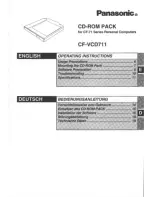
Basic function principles
ELX3351
28
Version: 1.3.1
If, for example, a 25 m copper cable (feed + return = 50 m) with a cross section q of 0.25 mm
2
is used, this
results in a line resistance of
R
L
= l/ (κ * q) = 50 m / (58 S*m/mm
2
* 0.25 mm
2
) = 3.5 Ω
If this value remains constant, then the error resulting from it can be calibrated out. However, assuming a
realistic temperature change of, for example, 30° the line resistance R
L
changes by
ΔRL =30° * 3.9 * 10-4 * 3.5 Ω = 0.41 Ω
In relation to a 350 Ω measuring bridge this means a measuring error of > 0.1%.
Fig. 21: 4-wire connection
This can be remedied by a 6-wire connection, in particular for precision applications.
Fig. 22:
6-wire connection
The supply voltage U
V
is thereby fed to the strain gauge (= current carrying conductor). The incoming supply
voltage U
Ref
is only measured with high impedance directly at the measuring bridge in exactly the same way
as the bridge voltage U
D
with two currentless return conductors in each case. The conductor-related errors
are hence omitted.
Since these are very small voltage levels of the order of mV and µV, all conductors should be screened.
Содержание ELX3351
Страница 2: ......
Страница 10: ...Foreword ELX3351 10 Version 1 3 1 Fig 2 ELX9012 with date code 32180005 and Ex marking...
















































